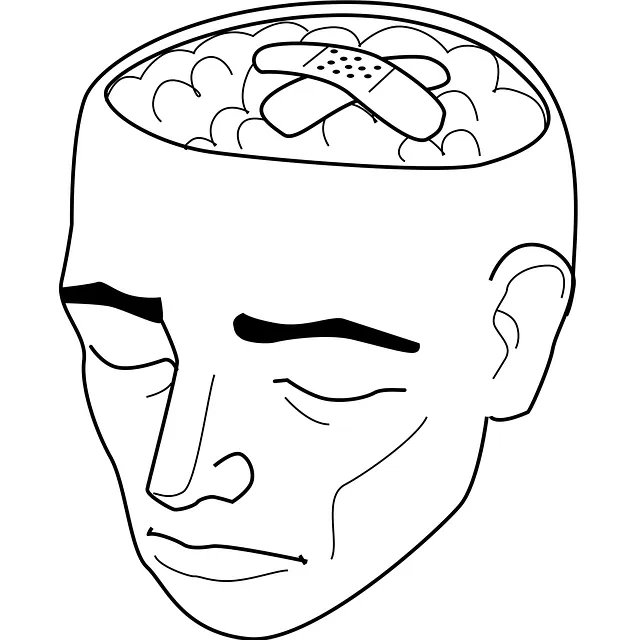Inner resilience, a powerful driver of personal growth and healing, is often overlooked yet innate. Kaiser Trauma Therapy offers an innovative approach to unlock this hidden strength, particularly effective for managing PTSD where conventional remedies fall short. This method focuses on processing past traumas through techniques like Kaiser breathing, fostering a deeper connection with one's inner self. By cultivating resilience, individuals can lead more fulfilling lives and transform their responses to traumatic experiences, especially catering to war veterans in their healing journey. Through specialized training, people learn effective coping tools and view challenges as opportunities for growth, building strong mind-body connections to manage anxiety symptoms.
Discover your inner resilience—the hidden strength that empowers you to overcome challenges, adapt, and grow. In this comprehensive guide, we explore various facets of building resilience through evidence-based practices like Kaiser Trauma Therapy. Learn how understanding and unlocking your personal resiliency factors can lead to profound healing and transformation. From identifying coping mechanisms to cultivating a resilient mindset, embark on a journey of self-discovery that will equip you to navigate life’s storms with grace and determination.
- Understanding Inner Resilience: Unlocking Your Hidden Strength
- The Role of Kaiser Trauma Therapy in Healing and Growth
- Identifying Personal Resiliency Factors: A Journey Inward
- Building Coping Mechanisms for Overcoming Challenges
- Cultivating a Resilient Mindset: Embracing Change and Growth
Understanding Inner Resilience: Unlocking Your Hidden Strength

Understanding inner resilience is a powerful step towards personal growth and healing. It refers to the innate ability to bounce back from adversity, overcome challenges, and adapt to change. This hidden strength isn’t just about surviving tough situations but thriving amidst them. Many people possess this resilience, often unknowingly, and it can be cultivated and enhanced through various therapeutic approaches. One such method is Kaiser trauma therapy, which focuses on helping individuals process past traumas and build upon their inherent resilience.
By employing techniques like Kaiser breathing for panic attacks, this therapeutic approach encourages a deeper connection with one’s inner self. It empowers individuals to confront and overcome post-traumatic stress disorder (PTSD) natural remedies may not always provide. Kaiser method success stories highlight the transformative power of unlocking this hidden strength, demonstrating that resilience is a skill that can be learned and mastered, paving the way for a more fulfilling and resilient life.
The Role of Kaiser Trauma Therapy in Healing and Growth

Kaiser Trauma Therapy offers a powerful approach to healing and personal growth after traumatic events. This therapeutic method recognizes that trauma can leave individuals with long-lasting symptoms, such as flashbacks, nightmares, and heightened anxiety, which often require more than traditional talk therapy to overcome. By focusing on processing and integrating the traumatic memories, this technique helps people make sense of their experiences and reduce the distressing emotions associated with them.
The gentle ways of kaiser trauma therapy cater to individuals seeking alternative therapies for PTSD in adults or those who have experienced war and its aftermath. Through various techniques, it encourages patients to confront and work through their trauma in a safe environment, fostering resilience and enabling them to lead fulfilling lives post-trauma. For war veterans, these alternative therapies can be particularly beneficial, offering a new path towards healing and recovery.
Identifying Personal Resiliency Factors: A Journey Inward

Identifying your personal resiliency factors is a profound journey inward, a process often nurtured by therapeutic methods like Kaiser trauma therapy. This approach encourages individuals to explore and understand their inherent strengths in confronting life’s challenges, especially after traumatic experiences. Through this introspective lens, one discovers that resilience isn’t merely the absence of struggle but rather the ability to bounce back, adapt, and grow from adversity.
Non-traditional therapy for anxiety disorders, such as Kaiser trauma therapy, incorporates mind-body techniques tailored to help trauma victims. These strategies promote self-awareness, fostering a deeper connection between the mind and body, which is crucial in managing and alleviating symptoms of anxiety. By engaging in the kaiser method for anxiety relief, individuals embark on a path of self-discovery, learning to harness their inner strength as a powerful tool against stress, trauma, and other mental health challenges.
Building Coping Mechanisms for Overcoming Challenges

Building strong coping mechanisms is a key aspect of developing inner resilience when facing challenges. Through various therapeutic approaches like Kaiser trauma therapy and trauma-informed care training for professionals, individuals can learn effective strategies to navigate through difficult experiences. These methods encourage self-awareness and emotional regulation, enabling people to process their traumas in healthier ways.
One such non-invasive trauma recovery method involves exploring natural ways to process trauma, such as engaging in creative outlets like art or writing, practicing mindfulness, and connecting with supportive communities. By adopting these coping mechanisms, individuals can foster a sense of control, enhance their ability to cope, and ultimately build inner resilience to overcome life’s challenges.
Cultivating a Resilient Mindset: Embracing Change and Growth

Cultivating a resilient mindset is a cornerstone of Kaiser trauma therapy, empowering individuals to embrace change and growth as integral parts of their healing journey. This transformative approach challenges the notion that traumatic events define one’s future. Instead, it encourages active participation in shaping a new narrative, where resilience becomes not just a response to adversity but a driving force for personal evolution.
Through dedicated Kaiser therapy training programs, individuals learn effective coping mechanisms such as deep breathing exercises for Kaiser therapy, which can help mitigate the intensity of panic attacks and promote inner calm. This mindfulness-based approach extends beyond mere symptoms management; it fosters an environment where change is seen as an opportunity for growth, encouraging a more adaptive and resilient response to life’s challenges.
Inner resilience is not just a concept; it’s a powerful tool for navigating life’s challenges. By understanding our hidden strengths, engaging in therapeutic practices like Kaiser Trauma Therapy, and cultivating a mindset that embraces change and growth, we can unlock our full potential. The journey to resilience involves self-discovery and building effective coping mechanisms, ultimately enabling us to flourish even in the face of adversity. Remember, with dedication, it’s possible to harness this inner fortitude and lead a more fulfilling life.






